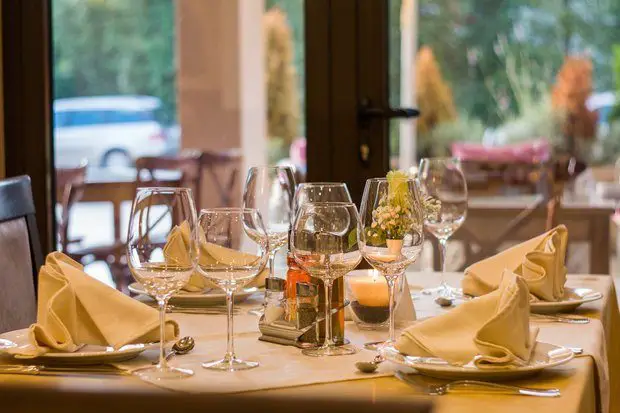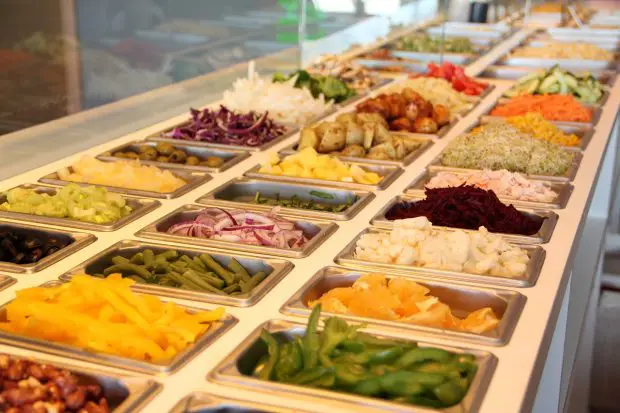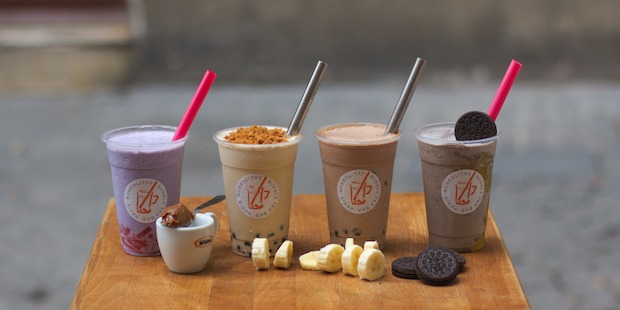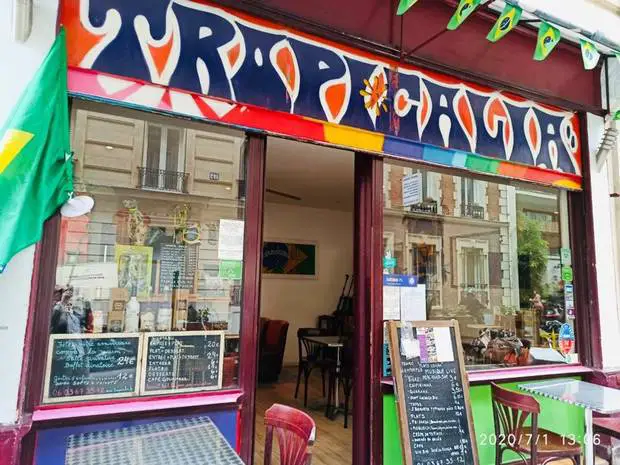Meat and eggs are often used for breakfast all around the world, or vegetables such as baked beans in England and sets of vegetables in Japan. However, it is the opposite in France.
A French breakfast is sweet. It is composed of slices of buttered bread and jam spread on it, sometimes croissants or other pastries and cereals. Usually, the drinks are coffee, orange juice or milk.
Let’s take a closer look at the principal ingredients of a Made in France breakfast.
The main elements of french breakfast in a picture :
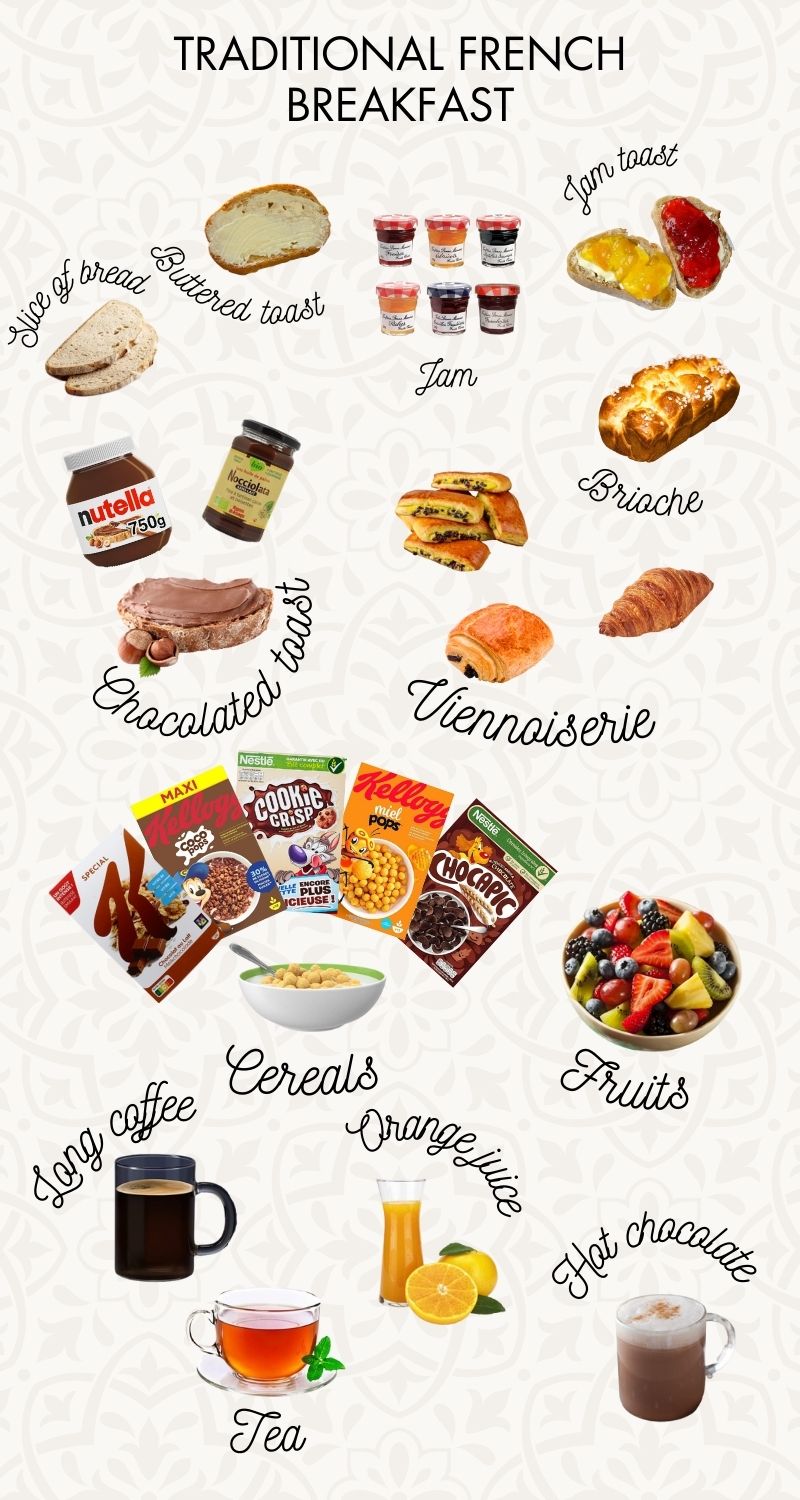
Ingredients of a Typical French Breakfast
Slices of Bread
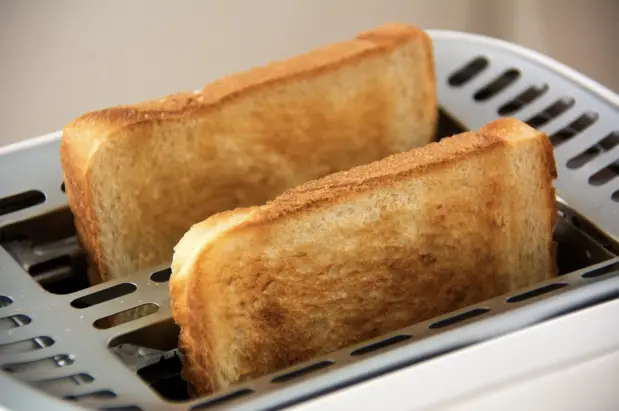
From a warm baguette, a pain de campagne (country bread) or a cereal ball, slices of bread are the signature element of a French breakfast.
You can choose to put them in a toaster if you like your bread crispy but watch out for mischievous slices of bread, you might have to fish them out.
Sliced bread is the solution to avoid toaster accidents, and kids love it.
But the secret to a good slice of bread is the baguette viennoise, brioche and sweet (soft and sweet from Vienna), with some spread!
French people love it as a breakfast or as a snack!
Brioche
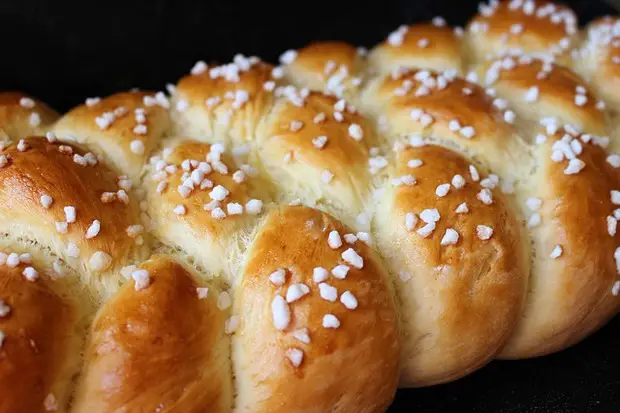
To enthrall people as soon as they wake up, tell them you have a warm brioche for breakfast.
Whether it is a gâche vendéenne (a brioche from the Vendée, a region in France) or a brioche à tête (a ball of dough at the top forms the head), French people love it.
The brioche is often flavored with orange blossom water but it is adapted for everybody’s taste: sugar pearls, livened up with praline, rum-flavored…
You can savor them with jam or another spread or without, but these ingredients will do it justice.
Jam

Jam is not very good for your figure but neither are French breakfasts usually…
It is a matter of pleasure and love of food.
Therefore, French people love to spread their bread from the boulangerie (bakery) with some home-made jam.
In France, the most well-liked are strawberry jam, red berries jam and apricot jam. Those are the safest bets for a sweet breakfast.
However, nowadays it is possible to find any sort of jam, such as kiwi jam, Canary melon jam, and even a sweet-savory combination such as tomato or onion jam.
Butter

It would not be a French kitchen without butter.
The same could be said for breakfast!
Butter is the essential ingredient for a French breakfast.
On a slice of a traditional baguette, spread a tasty butter made with local milk.
French people usually choose a beurre au sel de Guérande or de Noirmoutier (salty butter) which melts on a toasted slice of bread, that will make your mouth water.
But most of them don’t enjoy a savory breakfast, this is why it is common to spread butter on a lovely slice of bread and add a layer of jam.
The composition of a successful morning is unsalted butter and jam!
Some people even take apple sauce as a jam substitute.
Pastries (Viennoiseries)
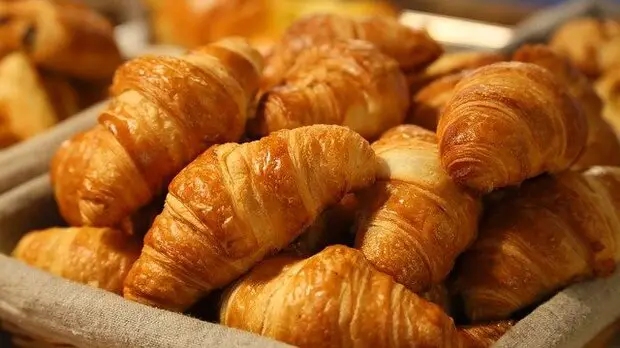
Pain au chocolat, croissant, pain suisse (chocolate chip brioche), Chelsea bun, chouquettes (puffs with sugar pearls), apple turnover…there is a lot to choose from.
Most importantly, there is nothing more French than to have a bag full of viennoiseries straight out of the boulangerie.
Even though the croissant remains the number one marvel and the guilty pleasure of a French breakfast, there are so many more pastries to discover.
Everybody finds their groove, even though vegans might have some difficulties finding pastries made with vegetable butter…
Besides, there are almost always miniature versions of these pastries, mini-croissants, little pains au chocolat, etc.
It is perfect for sharing or to try some.
However, pastries remain small pleasures for special occasions, such as vacations or week-ends.
Bread Spread

It is difficult to find another bread spread more popular than Nutella in the young French people’s hearts.
It is the bread spread that everybody agrees on (even the adults) and that shows up for breakfasts or snacks.
It can be spread on everything: brioche, baguette, whole wheat bread, sliced bread, even if it is judged to be better on a toasted slice of bread…
However, many other brands impose themselves on French tables, such as Nocciolata.
It is not very common to find something other than cocoa and hazelnut spread.
Peanut butter is not as “typical” in France as it is in an American breakfast.
Cereals
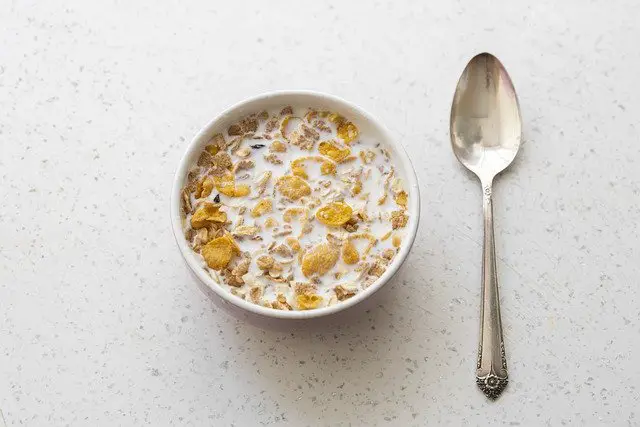
“Do you put cereal before or after the milk?” is one of the debates that divides French people.
As a matter of fact, French people are great cereal consumers for breakfast.
It is mostly the case for young people who have trouble choosing between Chocapic, Trésor, Miel Pops, Coco Pops…
Corn flakes (Spécial K) are the most popular among adults.
The best part about this?
Drinking the remaining cereal-flavored milk. But not everyone does that (especially not lactose intolerant people)!
Fruits

It is important to eat fruits and vegetables to have a healthy body and a healthy mind.
Therefore, it is common to have fresh fruits in a French breakfast.
Often served with an accompaniment, many people like to mix fruits with some fromage blanc (a creamy soft cheese).
Kiwi, banana, apple, orange… every fruit can create a perfect harmony and make your mouth water.
During winter, the clementine (a small orange) rounds people up and many eat them as a dessert or as a snack.
There are no rules: raw, with sugar, without sugar, with a coffee, with slices of bread… fruits are perfect to stop people from feeling guilty about their buttery breakfast!
Drinks in a Typical French Breakfast
Coffee

If you need a boost in the morning, the French breakfast is here for you with some coffee.
It is nearly impossible to go without it, whether it is on a Parisian terrace or at the dining table.
Most of the time however, coffee is not flavored or mixed with ice, usually, it is a long black (or Americano).
Nevertheless, it is possible to drink milky coffee, hazelnut coffee, a white coffee with a splash of milk for those who like their coffee sweet…
There is one thing French people love to do: dipping bread or pastries in their coffee.
Squeezed Fruit Juice

In the morning, French kids cannot go without their squeezed orange juice.
Nothing better than a glass full of vitamins.
A juice made with fresh fruit is exquisite.
Grapefruit and orange juices are the big winners in France, closely followed by multifruit juice and apple juice.
And for those who want the most perfect juice, they often go to the market to buy fresh fruit and squeeze them themselves.
This way, they avoid the chemicals in the supermarket juices and keep local businesses alive.
Tea and Herbal Tea

Beware, French tea is different from English tea.
Most English people who order tea in France are most likely to be met with disappointment.
There is no milk!
In France, tea is pictured as a healthy detox beverage to start the day on the right foot and it is not common to add a drop of milk.
Although mint green tea remains timeless, flavor associations and new recipes mixing several ingredients are highly appreciated too.
Hot Chocolate
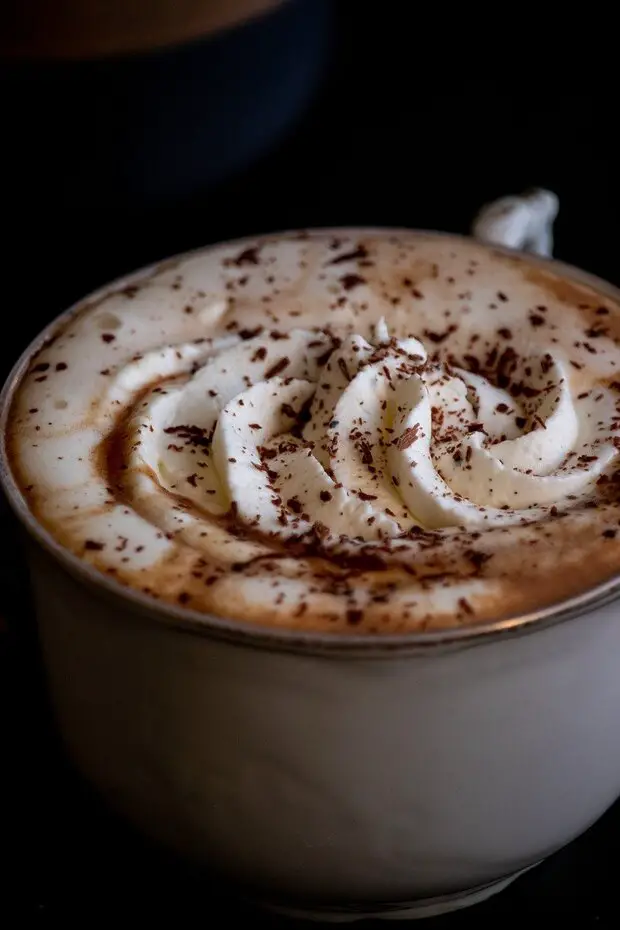
Adults and children’s guilty pleasure.
Hot chocolate is the comforting beverage on winter mornings.
Perfect to dip pastries or even to have a beautiful chocolate mustache.
French people combine hot organic milk and their favorite chocolate powder (Banania, Poulain, Nesquik…) and there you have it!
For an original hot chocolate, some people add coffee or marshmallows.
Besides, chocolate powder is also used for many other recipes such as the excellent children’s slice of bread (website in French)!
Ingredients NOT Present in a Typical French Breakfast
- Bacon. Contrary to the English Breakfast, there is a lack of cooked meats on the table.
- Eggs. Once again, it is uncommon for French people to cook scrambled eggs or fried eggs.
- Beans. Baked beans are not very popular in France.
- Crêpes. Except for the last three remaining from yesterday…
- Porridge
- Cheese
- Meat and fish. Traditional Asian breakfasts are often composed of meat or fish but it is far from the typical French breakfast.
I aim to share my tips and recommendations for the beautiful country of France. My goal is to help you plan your next adventure, whether it’s a weekend getaway or a once-in-a-lifetime trip. From finding the best hotels and restaurants, to discovering unique activities and sights, I’ve got you covered!

